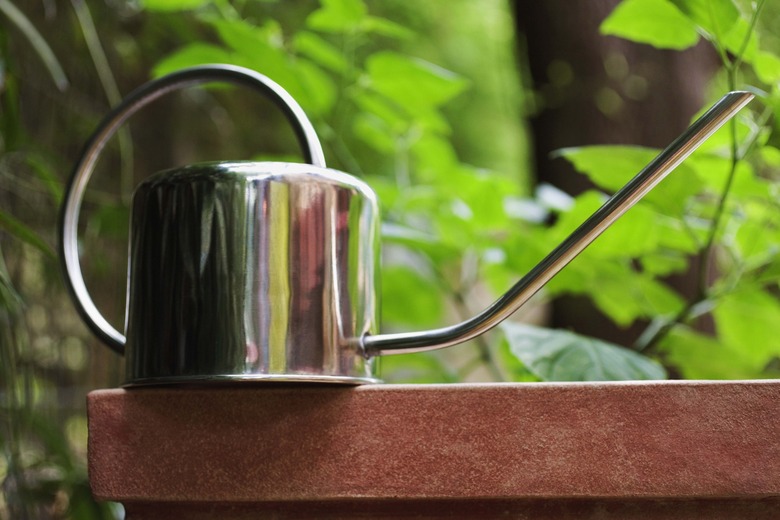How To Care For Rippled Peperomia
If you're looking for an unusual and attractive foliage plant, rippled peperomia (Peperomia caperata) may be the right choice for you. A member of the pepper family, it's sometimes called emerald- or green-rippled peperomia, because of the bright green color and warped, or quilted, surface of its leaves. You can grow it as a houseplant or outdoors year-round in U.S. Department of Agriculture plant hardiness zones 9b through 11a.
Lighting
Step 1
Rippled peperomia is a small plant, growing only about 6 inches tall. Its leaves are borne on straight, short stems and grow in a rosette that radiates from the center of the plant. Its flowers are extremely tiny and cover the surface of stalks that extend straight upwards and resemble mouse tails. A native of Brazilian rain forests, the plant grows best in a partially shaded spot that gets bright sun for part of the day. When grown outdoors, it benefits from planting in an area that gets full sun in the morning and partial shade in the afternoon. Grown as a houseplant, it does well 1 to 2 feet away from a brightly lit, south- or west-facing window.
- If you're looking for an unusual and attractive foliage plant, rippled peperomia (Peperomia caperata) may be the right choice for you.
- A member of the pepper family, it's sometimes called emerald- or green-rippled peperomia, because of the bright green color and warped, or quilted, surface of its leaves.
Temperature
Step 1
Rippled peperomia is extremely sensitive to frost and prefers warm temperatures that average between 68 and 75 degrees Fahrenheit. In areas where winter temperatures fall below 50 F, you can bring an outdoor-grown plant indoors in fall, keeping it indoors until warm weather returns in spring. When growing it as a houseplant or over-wintering an outdoor plant indoors, protect it from cold winter air near drafty windows and doors. When you move a peperomia outdoors in spring, prevent scorching of its leaves by exposing the plant to bright, outdoor light gradually, adding an hour or two of exposure each day.
Soil, Water and Fertilizer
Step 1
A rippled peperomia plant grows in any type of well-draining garden soil or in a standard potting soil. If your garden soil is high in clay and tends to hold water, add some fine sand at planting to improve its drainage. This plant only needs a moderate amount of water and does well when the top 2 inches of soil are allowed to dry out between waterings. During its growing season, which spans spring and summer, it benefits from fertilizing every two or three weeks with a balanced, 10-10-10 formula diluted to half strength, or 1/8 teaspoon per 1 gallon of water. Check your product label for exact rates and directions.
- Rippled peperomia is extremely sensitive to frost and prefers warm temperatures that average between 68 and 75 degrees Fahrenheit.
- When you move a peperomia outdoors in spring, prevent scorching of its leaves by exposing the plant to bright, outdoor light gradually, adding an hour or two of exposure each day.
Other Care and Problems
Step 1
Rippled peperomia develops a naturally pleasing form and needs no cutting back or pruning. It only needs repotting when it has outgrown its pot but can thrive when its roots become slightly crowded. When grown under excessively wet conditions, the plant can develop fungal problems, such as leaf spot and root rot. Keeping it in a well-ventilated spot, clearing away spent leaves and debris regularly, and watering a houseplant from below and an outdoor plant with a soaker hose or drip irrigation can help prevent these problems. Mealybugs and spider mites can infest a peperomia plant, but these can be controlled by spraying with insecticidal soap, diluted at a rate of 5 tablespoons per 1 gallon, or according to package instructions.
References
- National Gardening Association: Peperomia Caperata
- University of Florida IFAS Extension: Peperomia Production Guide
- Cornell University Department of Horticulture: Emerald-Ripple Peperomia
- University of Oklahoma: Peperomia Caperata — Emerald Ripple Peperomia
- University of Arkansas Division of Agriculture: Peperomia
